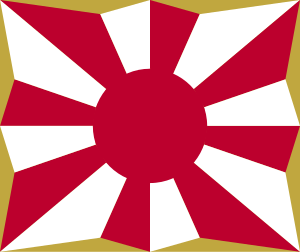Japan Self-Defense Forces
| Japan Self-Defense Forces 日本国自衛隊 |
|
|---|---|
 |
|
| Service branches |
|
| Leadership | |
| Commander-in-Chief | Prime Minister Shinzō Abe |
| Minister of Defense | Tomomi Inada |
| Chief of Staff |
Admiral Katsutoshi Kawano (Maritime) |
| Manpower | |
| Military age | 18 |
| Available for military service |
27,301,443 males, age 16–49, 26,307,003 females, age 16–49 |
| Fit for military service |
22,390,431 males, age 16–49, 21,540,322 females, age 16–49 |
| Reaching military age annually |
623,365 males, 591,253 females |
| Active personnel | 247,150 personnel (2015) |
| Reserve personnel | 56,100 personnel (2015) |
| Expenditures | |
| Budget | $41 billion (2016) $281.98 billion (2011-2015 period) |
| Percent of GDP | 1% |
| Industry | |
| Domestic suppliers |
Mitsubishi Heavy Industries Mitsubishi Electric NEC Kawasaki Heavy Industries Toshiba Fujitsu Fuji Heavy Industries Henderson Group IHI Corporation Nikon Komatsu Limited Japan Steel Works Hitachi Ltd. Daikin Industries Oki Electric Industry ShinMaywa Howa Sumitomo Heavy Industries Fujikura Parachute NOF Corporation Daicel Corporation |
| Foreign suppliers |
|
![]() Japan Ground Self-Defense Force (JGSDF)
Japan Ground Self-Defense Force (JGSDF)![]() Japan Maritime Self-Defense Force (JMSDF)
Japan Maritime Self-Defense Force (JMSDF)
The Japan Self-Defense Forces (自衛隊 Jieitai?), or JSDF, occasionally referred to as JSF, JDF, or SDF, are the unified military forces of Japan that were established in 1954, and are controlled by the Ministry of Defense. In recent years they have been engaged in international peacekeeping operations including UN peacekeeping. Recent tensions, particularly with North Korea, have reignited the debate over the status of the JSDF and its relation to Japanese society. New military guidelines, announced in December 2010, will direct the JSDF away from its Cold War focus on the former Soviet Union to a focus on China, especially regarding the territorial dispute over the Senkaku Islands.
...
Wikipedia
